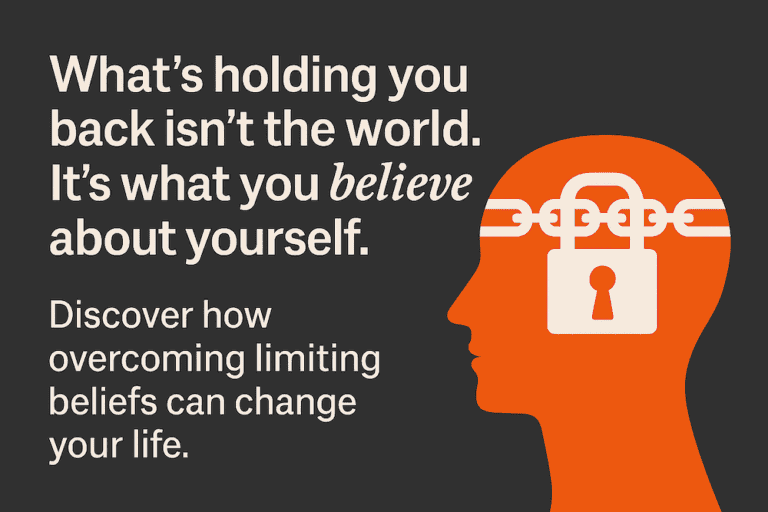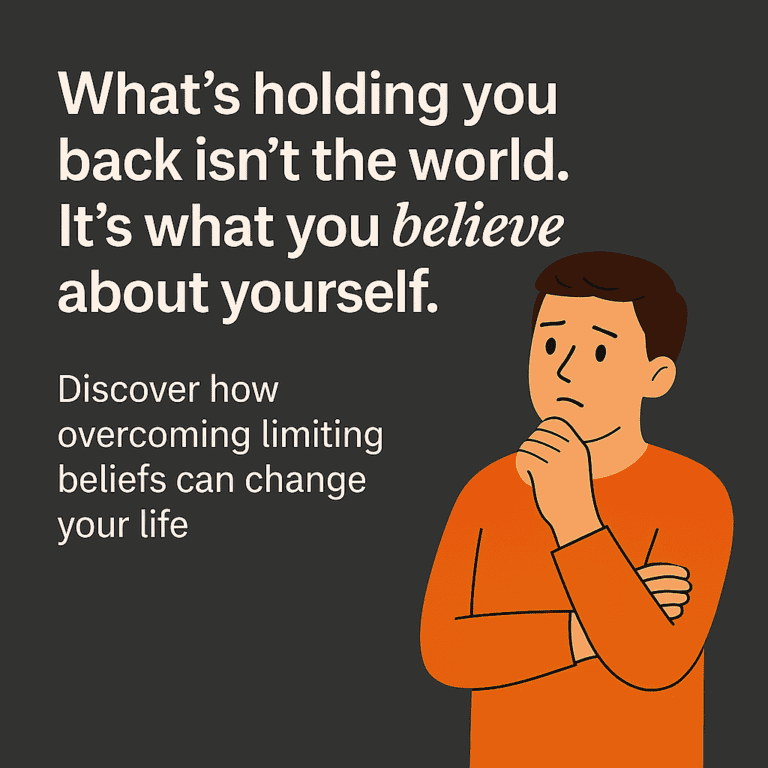Change Your Thinking And Supercharge Your Life
There’s no greater power to have in your life than having the capacity to change your thinking.
It takes courage to combat the negative thoughts that plague our minds, often for a lifetime, and then extract them and replace them with positive thoughts.
Our ego, also known as our inner critic, will try to convince us that our old worn-out thinking and mindset are best for us.
Why? Because we know them well and we’ve become accustomed to them, we think they are what’s best and will keep us safe.
They are part and parcel of our lives in our comfort zones.
However, this old thinking and mindset keep us from seeing and experiencing new and different ways or new and different paths to take in our lives.

“We cannot solve our problems with
the same thinking we used when we created them.”
~ Albert Einstein
Martin Ward | November 19, 2022
Change Your Thinking And Change Your World
When you begin to take control of your thoughts and change your thinking, it will change your life in every way.
Constantly surrendering to our old internal dialogue and status quo keeps us from embracing new ways of growing spiritually and intellectually.
Whether in our effort to make decisions for ourselves or with a group of people, transforming our negative thinking and negative beliefs into positive, more rational thought patterns can turn us into superpowers.
Becoming more confident in ourselves allows us to be vulnerable enough to change our perceptions and see the flip side of things.
To be able to see things as others see them. This takes personal strength and courage.
When we are vulnerable and determined enough to change our thinking patterns, it allows us to grow in our own lives and with and in the lives of others.
Personal, emotional, and spiritual growth are vital benefits of being able to change your mind and change your thinking.
“Whatever we plant in our subconscious mind and nourish with repetition and emotion will one day become a reality.”
~ Earl Nightingale

eBook

Audio eBook

eBook
Three personal growth tools for you as a gift for visiting 1VibrantLife.com
How Do You Change Your Thinking?
There is a process for changing your thinking, and it starts when you decide or understand that your life will improve, and it’s a good idea for you to do so.
In his book, You Are Not Your Brain, Jeffery M. Schwartz, M.D. highlights deceptive brain messages as;
“There are only a few true necessities in life, but for many of us, it doesn’t feel that way. A lifetime of habits, ingrained by repetition, can seemingly make us slaves to a not-always-beneficial master—our own brain.”
Sometimes we’re forced into recognizing a problem in the way we think, as there was for me because of a traumatic brain injury I sustained in a car accident many years ago.
Or one decides they need and want to do it.
It shouldn’t take some form of trauma for someone to change how they think.
However, for your sake, I hope you’re in the deciding category, and you decided to grow and become a more “thoughtful” thinker on your own.
Taking control of your thoughts or your thinking is a lifelong skill that everyone should learn to do.
It takes work to control how we think about ourselves and the world around us.
But the actual process, habit, or routine is, in my opinion, a reasonably easy task.
You just need to learn to apply it.
By developing the habit of recognizing and countering negative thinking, putting yourself in another person’s shoes, or seeing the other side of things, you will become a better person in every aspect of your life.
You become mentally and emotionally stronger when you learn to counter your negative, internal dialog or personal biases when they occur.
Adopting a personal growth or growth mindset allows us to see the big picture.
We free ourselves from the bondage of outdated thinking and open our minds, in positive ways, to newer and richer life experiences.
Allowing ourselves to adjust or change our thinking begins to move us out of our comfort zone and experience greater personal happiness for ourselves and those around us.
Negative situations, negative emotions, and negative thoughts are a part of life.
By learning to change your thinking, using the power of positive thoughts, emotions, and positive affirmations, you begin to take control of your mind and change your life for the better.
“Progress is impossible without change, and those who cannot change their minds cannot change anything.”
~ George Bernard Shaw
Change Your Thinking And Change Your Life
Whether or not you believe it, at this very moment, you can change your life by changing your thinking.
I know it sounds ridiculously obvious, but it’s not.
Right now, as you read this article, you most likely are experiencing some pre-programmed, preconceived subconscious ideas about the topic of changing your thinking.
These kinds of subconscious thoughts swirl around in our minds and have a lot to do with the outward actions we might decide to take, affecting our lives.
The subconscious and mostly self-defeating thoughts can hold us back in our daily life until we take the first step and begin to thoughtfully and systematically counter and break the pattern and power of our negative internal dialogue.
I believe that countering and breaking the regular negative repetitive mind pattern is the most important and impactful mindfulness technique we can develop.
This practice is also one of the foundational principles of cognitive-behavioral therapy or CBT. (More on the aim of CBT later)
Changing, or countering the way you think at the moment of thought, can be transformational for you.
It can create a new chapter for you in your life, as it did in mine.
Developing and using this real-time mindfulness tool, or what I would call a personal weapon against negative thinking, towards a more powerful positive mindset, is an absolute game changer.
When you start recognizing your negative thoughts or negative emotions and then countering them in real-time with more factual, positive, and realistic thought patterns, you begin to change your thinking and change your life.
“To raise new questions, new possibilities, to regard old problems from a new angle, requires creative imagination and marks real advance in science.”
~ Albert Einstein
How Long Does It Take To Change Your Thinking?
In actuality, you can develop more awareness and a process for changing the way you think in about six to eight weeks.
We’ll review a relatively easy routine or a process for changing your thoughts later.
If you stop and think about the thoughts you’re thinking right now while you’re reading this article, you may pick out some negative thoughts about what I’m suggesting to you.
So, right at this moment, you could… wait for it… stop and decide to change or counter your thinking.
These are likely negative thoughts about the idea that you can change your thinking now, right this second.
You might think, well, I can stop and change my mind or opinion about what you’re describing to me right now. And you would be right. That’s no big deal.
The really big deal that I’m proposing to you is spending the time and making an effort and making this thought-changing process a way of life for you.
Developing long-term personal awareness, taking control of your negative thinking, upsetting emotions, and negative life situations twenty-four hours a day, seven days a week, three hundred sixty-five days a year.
How long it takes to change the way you think and be in control of the process is only determined by the actual time you commit to doing the hard work needed.
The good news is that the process of re-programing and overcoming your negative thinking and limiting beliefs is really not that hard or does not take long to develop some capability, as I described above.
The hard part is sticking with it and becoming more consistently and consciously aware of your negative thoughts as you have them and then replacing them with positive thoughts, aspects, and, of course, facts.
Please, let us all dispense with the idea of alternative facts. There’s no such thing.
There may be another side of the story, which is part of having an open mind and seeing the other side of things, which is a part of being able to change your thinking, but there is only one set of facts. But I digress.
When you recognize a negative thought, you need to decide whether to counter that negative thought or belief with positive thoughts, more evidence, or some practical strategies.
The more you adapt to being aware of your negative thinking daily, the quicker you can train your mind to do it automatically.
Your long-term goal is to retrain your mind to instantaneously counter your negative thoughts and replace them with more positive, factually based thoughts about who you and the world around you are now.
“The happiness of your life depends upon the quality of your thoughts: therefore, guard accordingly, and take care that you entertain no notions unsuitable to virtue and reasonable nature.”
~ Marcus Aurelius
Why Is It So Hard To Change Your Thinking and Mindset?
In her article on Huffpost, It’s a Matter of Mindset, Ten Principles For Unleashing a Critical Mindset, Christine M. Riordan, Contributor, and Dean, Daniels College of Business, University of Denver, describes for us what critical thinkers are;
“Those with a critical thinking mindset open themselves to new ideas, new ways of viewing issues, and constantly ask relevant questions.”
We can also explain the term or phrase critical thinking mindset as having the ability to engage in independent and reflective thinking and using your ability to reason.
To ensure we’re on the same page, mindset is a person’s way of thinking.
So, you and I have a history together, well, not a personal history, but more of a history of how we live our lives through our thoughts.
We feel love, pain, and grief and also want and dream of better things and a better life for ourselves and our families.
But we also, though there are exceptions to every rule, have and experience the wedge of self-doubt and negative thinking in and about ourselves.
We’ve developed and believed some of the same repetitious negative thoughts about who we are, who we were, and who were becoming.
Not to mention the negative thoughts we think about what others might think about us.
We must consciously grasp this typical negative thought pattern about what others might think and change or reframe it based on “reality.”
The Big #5 in the cognitive distortion thought checklist is below.
An example of this type of negative thinking would be that we are less than, or not as worthy as, or as good-looking as, or capable as others, etc.
“Whatever we plant in our subconscious mind and nourish with repetition and emotion will one day become a reality.”
~ Earl Nightingale
Why We Need To Change Our Thinking
Robert M. Schwartz wrote; The Internal Dialogue: On the Asymmetry Between Positive and Negative Coping Thoughts, and in it, he describes that “The concept of self-talk (Ellis, 1962), or Internal dialog, (Meichenbaum, 1977) can be traced back to Plato,” (427 / 347 BC).
“In Theaetetus, Socrates described thinking “as a discourse that the mind carries on with itself… when the mind is thinking, it is simply talking to itself, asking questions and answering them, and saying yes or no. “
We think we aren’t smart enough, good-looking enough, or haven’t had enough education, and we aren’t that much fun when we are with a group of people.
This negative self-image list can go on and on. Pick your poison, and you get what I mean.
We are what our parents or others have said we are or think we are, or we are our past instead of believing in who we are now, can be, or can become.
Therefore, it seems so hard to change your thinking.
We can not free ourselves from the limiting beliefs we’ve developed throughout our lives unless we decide to work at doing so.
Most people never even get to this place of asking why they think the way they do.
I know it’s a good thing for you to be here.
We both have the strength and courage to dig deeper into ourselves and ask why we think the way we do.
And more importantly, we ask, can we change the way we think for the better?
My answer is yes, you can.
“Don’t dwell in the past, do not dream of the future, concentrate the mind on the present moment.” ~ Buddha
How To Change Your Thinking Habits
As I’ve described above, you and I, and almost everyone else, have similar thinking habits about ourselves and the world around us.
We hold on to what we know or believe to be true from the past.
“Whatever your mind can conceive and believe it can achieve.” ~ Napoleon Hill
Even at this point in our lives, that habitual way of thinking about what we believed back then isn’t very effective communication to be having with ourselves because it simply is no longer true.
But we may still recycle these old beliefs and hear them in our minds dozens of times a day.
The best way to change your thinking habits is to follow this simple exercise;
#1. Stop the flow of your thought process when you recognize that same repetitive negative thought or belief coming up in your mind.
#2. Then consciously examine that negative thought or belief as to its truth or validity as it applies to you in your life now.
#3. Counter that negative thought with a new positive affirmation, positive emotion, or something you know to be true about yourself or the world around you.
Note: It’s essential to write, on a legal pad or in a note section of your cell phone, a list of all the positive affirmations and aspects of yourself and your life that you can come up with to use as reframing or replacement thought guide in the beginning process of this exercise. Always keep this list with you for convenient and quick access!
When you think about it, this is a reasonably common-sense thought process not taught to the average person, and it should be.
It’s a relatively simple thought awareness process often used in cognitive-behavioral therapy (CBT) to overcome cognitive distortions.
“What we think determines what happens to us, so if we want to change our lives, we need to stretch our minds.” ~ Wayne Dyer
Changing Your Thinking With CBT
You can learn more detailed information from the bestselling guide on CBT, cognitive behavioral therapy, and The Feeling Good Hand Book By Dr. David D. Burns, MD. I highly recommend it.
I had certainly never heard of CBT when I learned about cognitive-behavioral therapy in my 20s.
When you practice this exercise consistently for just a little bit of time or even over a couple of weeks, you’ll begin to see its power.
It trains your mind to counter these negative thoughts with your positive thoughts and affirmations and begins to remove them from your belief system.
And if you stick with it, it can be a big help in removing them entirely from having a significant adverse effect on your life.
They should teach it even more in-depth to children in every school worldwide.
It would enhance every student’s communication skills, improving their sense of self, self-worth, and self-esteem and growing their self-confidence.
Teaching children to be more aware of their thought processes and how and why they think about themselves and others in the way that they do.
It would also give them a fantastic mental tool when facing a difficult life situation, seeing things from a different viewpoint, and moving forward more confidently and peacefully.
The Ten thought processes checklist in CBT
These are our manors of thought or negative thinking that assist in creating cognitive distortions.
- All or Nothing Thinking
You look at things as absolute or black and white. - Overgeneralization
You view a negative event as a never-ending pattern of defeat. - Mental Filter
You dwell on the negative and ignore the positive. - Discounting the Positives
You insist your accomplishments or positive qualities don’t count. - Jumping to Conclusions
A. Mind Reading; You assume people are reacting negatively to you when there’s no definitive evidence.
B. Fortune Telling; You arbitrarily predict that things will turn out badly. - Magnification or Minimization
You blow things way out of proportion, or you shrink their importance inappropriately. - Emotional Reasoning
You reason from how you feel: “I feel like an idiot, so I really must be one.” Or. “I don’t feel like doing this, so I’ll put it off.” - Should Statements
You criticize yourself or other people with “Shoulds” or “Shouldn’ts.”
“Musts,” “Oughts,” “and have tos” are similar offenders here. - Labeling
You identify with your shortcomings. Instead of saying, “I made a mistake,” you tell yourself, “I’m a jerk,” or “I’m a fool,” or “I’m a loser.” - Personalization and Blame
You blame yourself for something you weren’t entirely responsible for. Or you blame other people and overlook ways that your own attitudes and behavior might contribute to the problem.
Note: Many of these thought distortions in this list can apply to a person’s thoughts or patterns of thoughts simultaneously. This is where a more in-depth study of CBT is of the most value.
Conclusion
Now is the perfect time to change the way you think about yourself.
To change your thinking is to change your life by opening your mind to new perspectives, new possibilities, life experiences, and new and different people.
The information I present in this post and throughout the 1VibrantLife site on cognitive-behavioral therapy is only intended to introduce what CBT could do for you.
Again, it’s always highly suggested that you find a well-trained professional therapist to work with through those difficult times in life when things feel out of control.
I’m a huge believer in the principles and practice of cognitive-behavioral therapy, CBT, and its tremendous benefits.
I have learned, developed, and followed this relatively simple exercise to overcome negative thinking in my own life.
It has transformed how I think about myself and the world around me.
I’m convinced that CBT did, in fact, supercharge my life and brought me back from what was a very challenging and dark time in my mid-20s.
Things are never as bad as they seem, and you can get your thinking and life back on track.
Learning to take control of your thoughts, and change your thinking process even a little bit, can give you a fresh perspective on things.
You can gain control of those roller-coaster emotions and stress levels we all feel at times.
It takes courage and strength to consciously, actively, and purposefully begin to change how you think about yourself and the world around you.
Keep moving forward, one breath and one step at a time.
You can change your thinking!
I do not doubt that when you do, you will supercharge your life.

My Name is Marty Ward and I’m the creator and publisher of the 1-Vibrant-Life blog.
On March 8th, 1984, I sustained a traumatic brain injury in a car accident while I was driving to my day job.
At the time of the accident, I was having a fairly successful life as a musician in Chicago, which had included a recent appearance on Star Search 84′ with Ed McMahon and preparing to be included in the group’s major independent recording contract.
However, after my accident, I was unable to perform or play my instrument. I was out of work and I had lost all confidence in myself and my abilities, felt lost and with no direction.
My injury and my recovery led me down a path of self-improvement, and self-discovery which gave me my life back filled with many amazing experiences and a newfound sense of hope. Learn more about my story on the 1-vibrant-life about page.
CBTCP Certification (Cognitive Behavioral Therapy Certified Practitioner) | 10-16-2021 Certification From The Academy of Modern Applied Psychology, in The Transformative Science of Cognitive Behavioral Therapy, CBT



